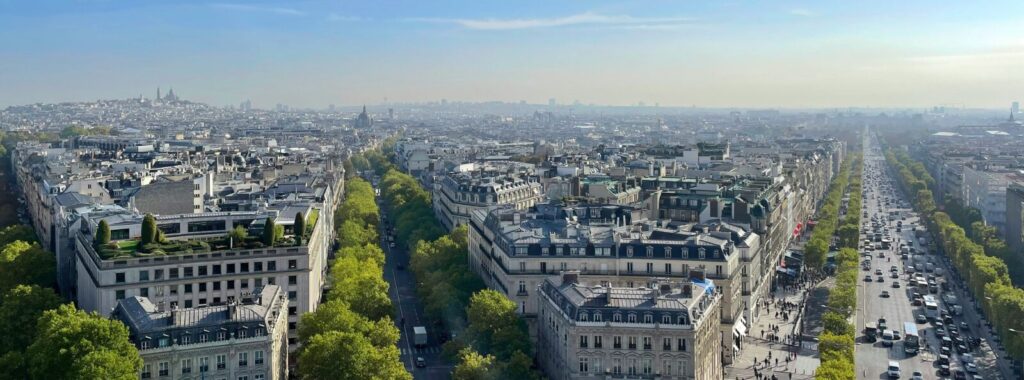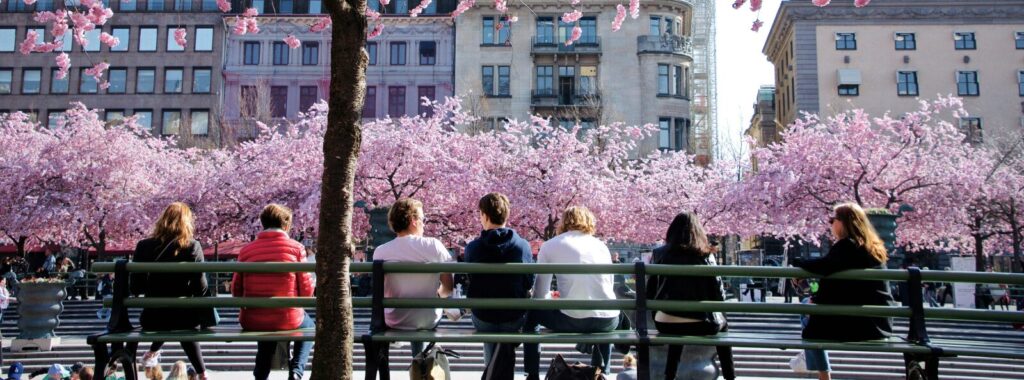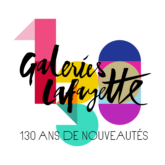Opera Garnier: history, art and the charm of its architecture
The Opera Garnier: elegance and history just a few steps from the Galeries Lafayette Haussmann. The Opéra Garnier, also known as the Palais Garnier or Paris Opera, is one of the most emblematic buildings in the French capital. Located in one of the most elegant districts of Paris and just a few steps from Galeries Lafayette, it is a must-see due to its majesty and the mysterious anecdotes that lie behind its walls. Its beauty and mystery have served as inspiration over the years. In fact, the famous novel The Phantom of the Opera was inspired by it.
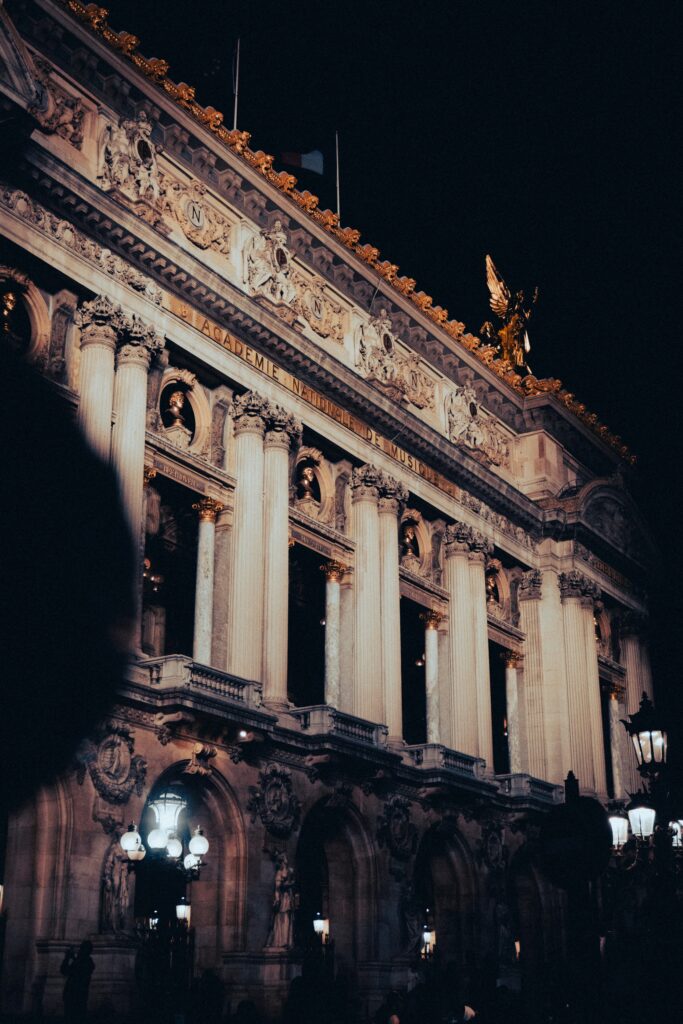
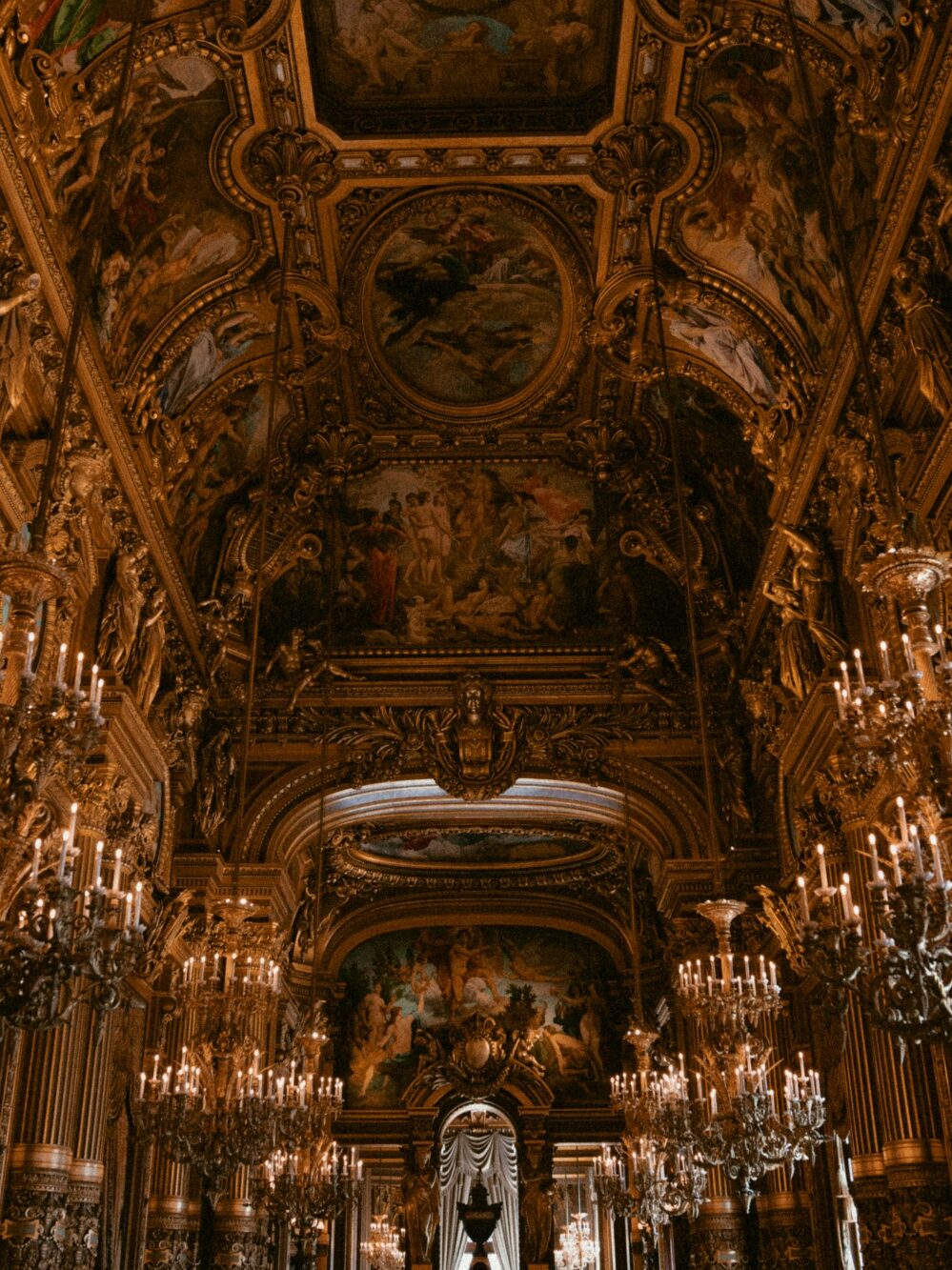
A bit of history: the Opera Garnier and its architectural importance
The Opera Garnier was born as the result of the renovation plan launched by Emperor Napoleon III. After an attack on the opera house on Rue Le Peletier in 1858, he considered it necessary to build a new one that would offer more security to the public.
Origin and construction of the Opera Garnier
However, it was not until 1861 that the emperor announced a competition to design a new theatre. This would form part of the ambitious urban renewal plan, for which Napoleon III commissioned Baron Haussmann. The aim was to create a unique building capable of symbolising the grandeur of the Second Empire.
Against all odds, it was the young architect Charles Garnier, at that time virtually unknown, who emerged victorious.
The construction of the Opéra Garnier was no easy task and took a long time. He had to face all kinds of problems, from structural issues (due to the shallow water table where the foundations had to be laid) to budgetary problems and those arising from wars, such as the Franco-Prussian War, the fall of the Empire and the events of the Paris Commune.
The Paris Opera House was inaugurated on 5 January 1875, after a first failed attempt in 1867. The opening ceremony took place under the Third Republic (by then, Napoleon III had already died) and with the Second Empire relegated to the past. The ceremony was attended by President Maréchal Patrice de Mac-Mahon and famous personalities of the time. Charles Garnier was present in a discreet background role. In fact, he was not officially invited to the ceremony—probably because the new republican regime associated him with the former imperial power—and had to buy his own tickets.
The inauguration of the opera house was sober and tense, as it was a work begun during the Second Empire but which would see the light of day under a republic that did not yet know how to deal with the imperial legacy.
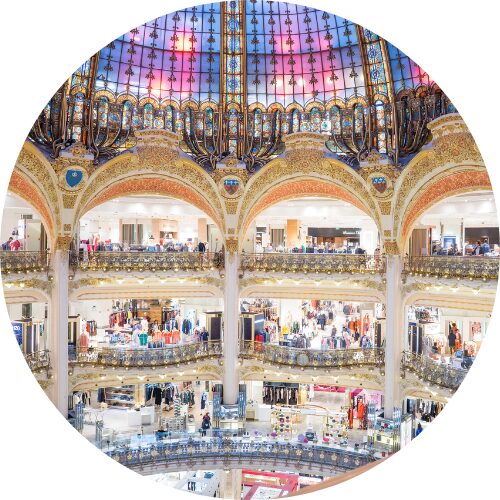
If you travel to Paris, don’t forget to visit it. Afterwards, you can end the afternoon at the Galeries Lafayette, which is a few minutes’ walk away and has one of the most beautiful Art Nouveau domes in Paris. Every weekend, Galeries Lafayette Haussmann offers a guided tour, in French or English, of this iconic place.
An architectural marvel
The Opéra Garnier is an architectural marvel that perfectly represents the eclectic style of the Second Empire, with an unparalleled blend of classical, baroque and Renaissance influences. It was conceived as a work of art in which painting, sculpture, architecture and the finest craftsmanship converge.
As soon as you see it, you will be struck by its golden pediments and Corinthian columns. Inside, visitors are amazed by a magnificent circular foyer leading to a double helix staircase in white and green marble. Also noteworthy are the impressive Hall of Mirrors and the library, now a museum.
But without a doubt, the greatest admiration falls on the main theatre, which can seat 2,000 people and is crowned by an impressive dome. The opulence of its finishes is present throughout the room: the curtain, the carved furniture, the voluminous chandeliers and the golden details, which transport viewers to the majesty of the Second Empire.
📝
Good to know!
After exploring the fascinating history of this iconic venue, what better way to treat yourself than with a well-deserved break? Just a few minutes’ walk away, Galeries Lafayette Haussmann welcomes you to Lafayette Gourmet, a veritable temple of French gastronomy. Whether you fancy a refined lunch, a quick snack or simply a coffee in an elegant setting, you’ll find everything you need to delight your taste buds here.
Some interesting anecdotes about the Opera Garnier
Behind the Opéra Garnier lie incredible anecdotes and stories that enchant Parisians and tourists alike. Here are some of the most interesting ones:
The underground lake and secret passageways
As we mentioned earlier, during the construction of the building, Garnier had to deal with significant structural problems due to the water table in the area. As it could not be drained, it was necessary to build numerous corridors and an artificial lake to channel the water and keep the foundations afloat. This peculiarity inspired Gaston Leroux to write The Phantom of the Opera in 1909.
Box number 5
If you are lucky enough to visit the Opera Garnier, you will notice a place in the shadows that has been shrouded in mystery for over a century: box number 5. At first glance, it looks like just another box in the majestic opera house, but if you get closer, you may sense something different…
And it’s no wonder, as this box is permanently reserved for a very special and elusive guest: Erik, the Phantom of the Opera.
In Gaston Leourx’s famous novel, published in 1910, Erik, the disfigured musical genius who inhabits the theatre’s passageways, demands that the opera directors reserve box number 5 for him at every performance as part of his pact of silence and protection.
Since the book was published, the opera house has kept its promise, and not just in fiction. So, when you visit the Opera Garnier and look towards that spot, you may think that the box is empty. But don’t be too sure… who knows if the phantom is watching you from his seat?
From the double staircase and the main foyer to the forgotten foyer
If there is one image that remains etched in your memory when you visit the opera house, it is undoubtedly that of the double helix staircase leading into the theatre. On either side of the grand foyer — where high society used to show off their finery before entering the main hall — stands this imposing marble staircase, which combines the white of its low, spaced steps (so that ladies could climb gracefully despite their voluminous dresses) with the red of the balustrades and the magnificent green marble from Sweden.
However, this is not the only entrance. There is a secondary staircase, located on one side of the building, much less well known but just as elegant, which leads to a place with a name that could well have come from a novel: the forgotten foyer.
It was a direct entrance for spectators who rented a box or seat for the entire season. Thanks to this access, they could enter the opera house directly without having to pass through the main foyer. Thus, they could be seen at the opera… but enter unseen.
Over time, these customs changed and this entrance fell into disuse. The opera staff began to call it “le vestibule des abonnés oubliés” (the forgotten subscribers’ foyer) or, more simply, “the forgotten foyer”.
The Chagall dome
In 1964, André Malraux, the French Minister of Culture, commissioned the decoration of the dome of the main hall to the artist Marc Chagall, one of the most important painters of the 20th century. The aim was to modernise the image of the opera house and pay tribute to art and culture. The result was highly controversial; in fact, it caused a real scandal, as the colourful and modern design of the fresco was rejected by the more traditional sectors.
However, today, this dome is recognised as one of the best examples of contemporary art in a historic building.
Plan your visit to the Opera
Visiting the Paris Opera is a unique experience for anyone travelling to the French capital. Not only will you fall in love with its wonderful architecture, but its stories and mysteries will captivate you forever. To make your visit a success, you should know that there are different ways to access the opera house.
- You can opt for self-guided tours with general admission, which will take you to the most interesting parts of the opera house, such as the salons, the grand staircase, the library-museum and even the auditorium.
- Choose guided tours available in several languages.
- Or book tickets for one of the shows on the website.
In any case, don’t hesitate to ask for information or buy your tickets at the tourist information point at Galeries Lafayette, open Monday to Saturday from 10 a.m. to 6 p.m.
Take advantage of the proximity to Galeries Lafayette to go shopping
If you want to enjoy a complete Parisian experience that perfectly combines art and culture with the best fashion and gastronomy in a single tour, just a few steps from the Opera Garnier you will find the iconic Galeries Lafayette Haussmann. Here, the best haute couture brands and exclusive perfumeries converge with the finest jewellery. And to end your day on a high note, there’s nothing better than taking a sweet break at the Ladurée tea room, located in the heart of Galeries Lafayette Haussmann.
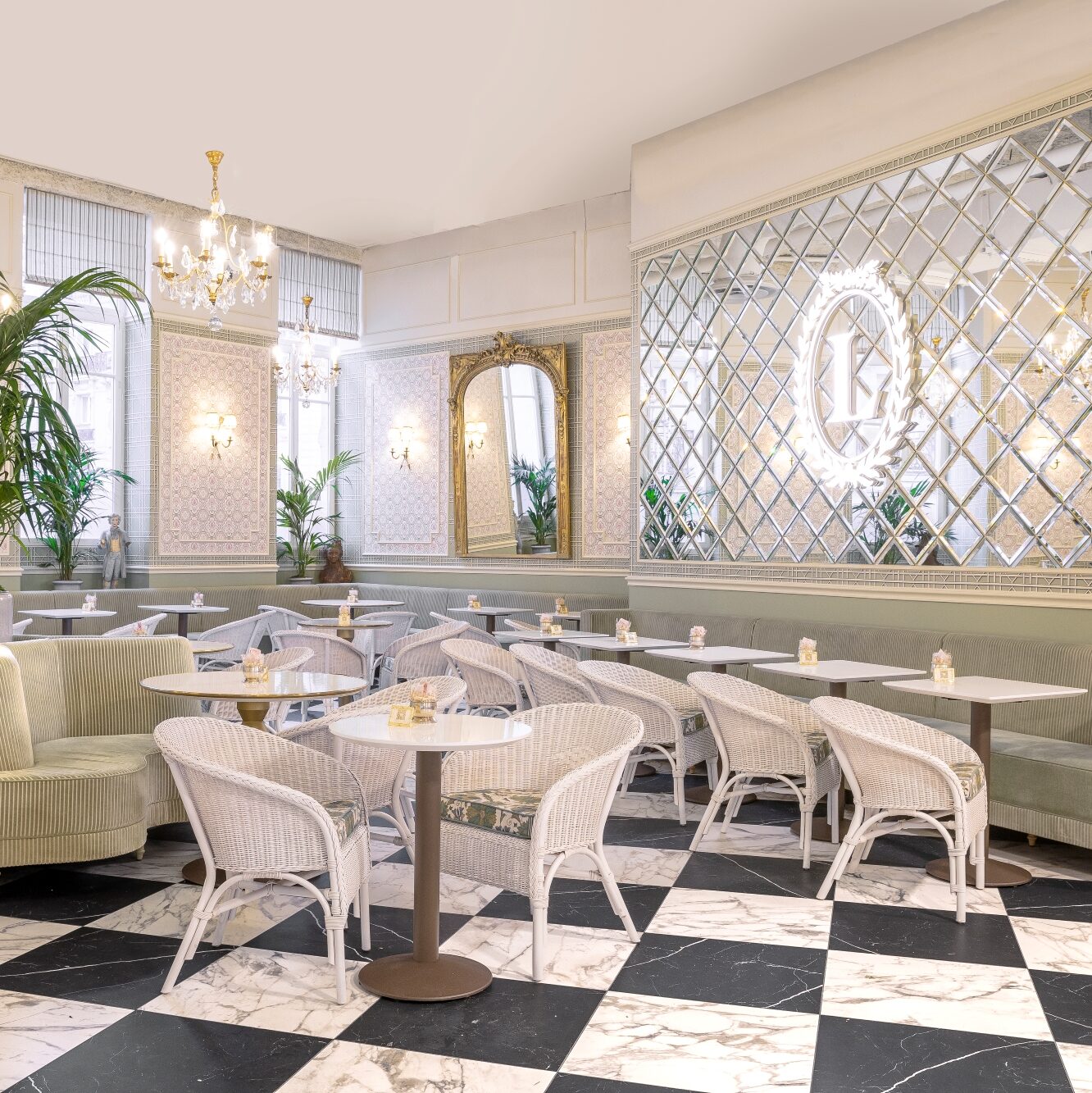
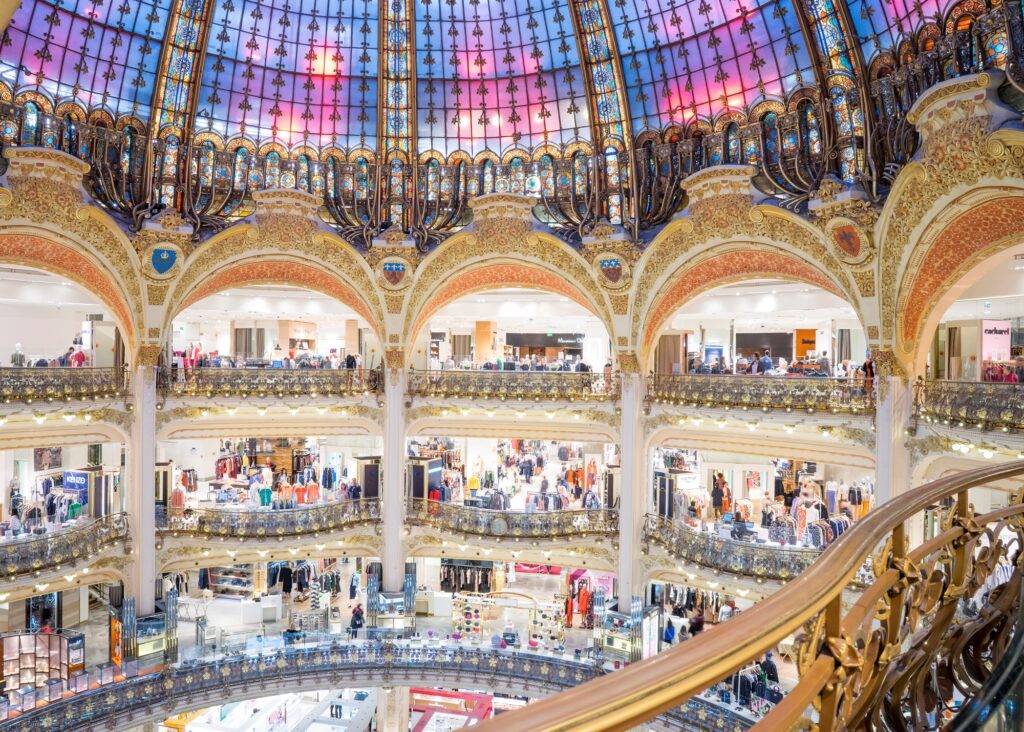
The Opera Garnier and Galeries Lafayette Haussmann are an unmissable duo for savouring the Parisian art de vivre.
